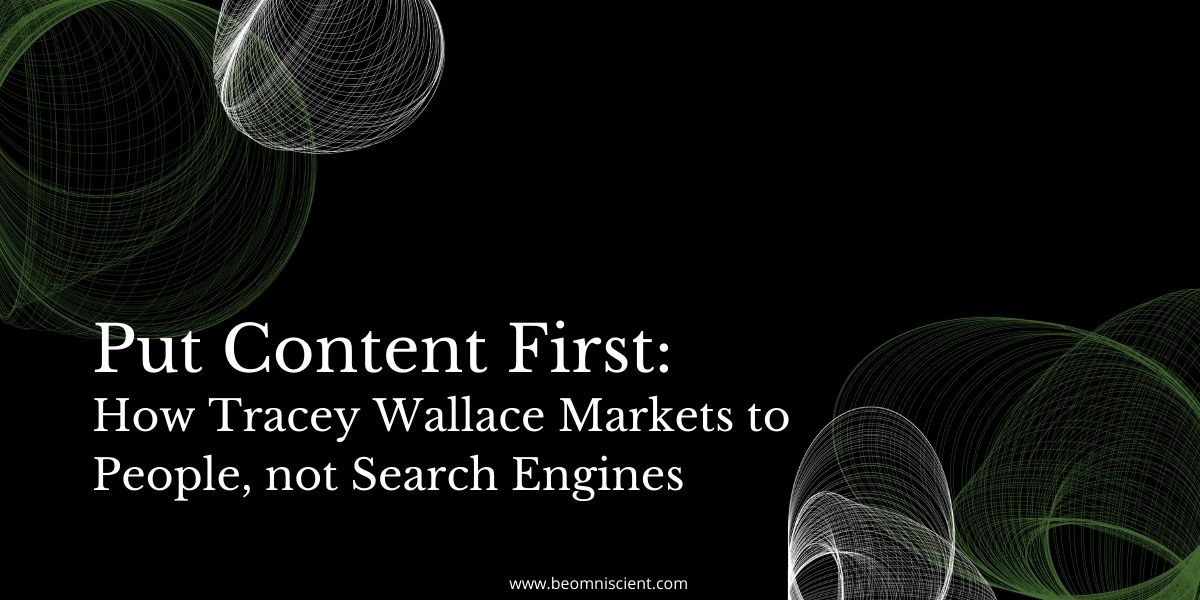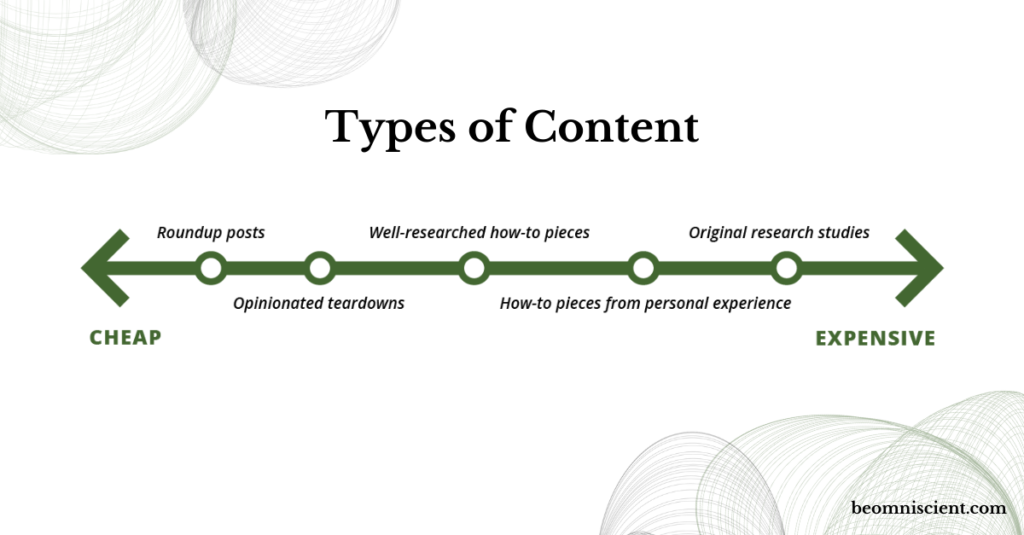
Want to take your blog traffic to over one million sessions per month?
That’s exactly what Tracey Wallace accomplished while working as the Global Editor in Chief for BigCommerce.
Today, Tracey is the Director of Marketing for MarketerHire. An experienced content marketer, Tracey has also written for publications like Elle.com, Time Out New York, and Mashable.
So what changed dramatically during Tracey’s time overseeing the blog at BigCommerce?
She learned to put content first and cater to one specific reader, versus trying to write for a universal audience or SEO-loving bots. Read on for more details or listen to the full episode on the Omniscient Podcast:
Write for people, not bots
Creating content with SEO in mind is essential, but it can’t be the only thing guiding a piece of content.
“Not only has the industry written more and more for the bots, at least over the last five years, it’s also getting way, way harder,” Tracey said.
As the amount of content online grows, it’s a lot more difficult for companies to rank well for their target search terms. Not only that, good SEO doesn’t always mean quality content!
Content that prioritizes SEO at the cost of the writing won’t work for the readers searching for help. They’re trying to find actionable, easy-to-understand solutions to their questions online.
That’s where Tracey’s experience as a journalist comes in.
“Good content doesn’t follow a very specific template, especially a very specific template that is written for bots. You need good editors. You need that discerning eye. And then, of course, good content isn’t writing and optimizing for the bots only,” Tracey said.
Writing helpful content with the reader in mind is key to ensuring content resonates with the right people.
“When you write or create anything for one individual, you’re ultimately creating it for many, versus if you’re trying to create something for many people, you’re ultimately creating it for no one,” Tracey said.
Targeted, quality content isn’t the route to take if you just want to make a quick buck.
Why it pays to play the long game
The ROI of content marketing is often massive, but it can be a long wait before seeing results.
Tracey realized that the time and resources needed to execute high-quality content weren’t always clear to leadership that may not be familiar with content marketing.

“One of the harder things to do has always been to get investment from execs even as a founder myself. I own a direct-to-consumer brand. And I’m often like, okay, do I write this 2000-word post? Or do I put some money behind some ads? Always write the post,” Tracey said.
Investing in quality content upfront allowed Tracey to create helpful content for the audience at BigCommerce, not only in the short-term but for years to come, generating new and repeat customers to this day.
Playing the long game with content means your readers form a community around your brand’s values. They connect with the content, so they connect with the brand. That turns readers into loyal customers.
“What you build today in terms of content might not yield a sale for a long time — months, years, and then they’ll probably still come in a different channel, so you actually won’t get attribution for it, which was kind of the entire content funnel. That said, though, not investing in content is a tragedy.”
Reuse, repurpose and refresh
Good content doesn’t sell itself.
Once you have a piece of content that ticks all the boxes, you want to make sure it’s accessible and easy to digest.
“You’ve got to package it up. You need to have some nice images, right? The UX of it needs to feel nice and intuitive,” Tracey said.
Not only should it look nice, but you want to make sure it has the widest reach possible. Not every customer looks for information the same way.
“You should take into account that not everybody likes to read 15,000 words on the internet. Maybe they want to read those in a PDF. Maybe they want to get a book. Maybe they’d rather take a course. How can you take a piece of content that you’re producing, pull out bits and pieces and slices, and serve that content to people in a variety of different ways?” Tracey said.
Repurposing without a repeatable process can slow down your content production, so make sure you have one in place.
Create a winning process
Tracey developed a systematic approach to creating valuable evergreen content that audiences crave.
It starts by talking to customers.
“You want to start by making sure somebody is always talking to customers as well as other internal teams, creating content that feeds your own curiosity. If you don’t care about it, nobody will. If you wouldn’t read it, nobody would,” Tracey said.
Once you learn what your audience wants, it’s important to bring in other voices and experts in the industry to lend credibility to the content.
“Tell other people’s stories and share their ideas too. You never want to be talking in a bubble because again, nobody cares,” she said.
As always, polishing the piece of content through formatting, graphics, images, and other tools helps make it easy to consume and share with others.
“Make it pretty, easy to read, personable,” she said.
Finally, Tracey emphasizes the power of reusing the same piece of content in different ways and throughout the sales funnel.
“Reuse it everywhere, specifically lower in the funnel. Once your content team, in particular, really becomes an expert on that topic, they can begin to educate the entire company and, as a result, customers,” Tracey said.
Know your “why”
If you’re creating content without a purpose, you won’t be able to measure your success.
Outlining the intent behind each piece before getting started will ensure that everything you create aligns with your goals and leads to results.
“As a content marketer, especially over the last decade, I’ve learned very quickly that in order to get the investment that you want, you’ve really got to think about, ‘How am I going to use this content to educate my existing people in the funnel, to educate my sales team, to educate my internal team? Why does this matter?” Tracey said.
The best content has both a clear goal and a clear audience. If you don’t know the answers to these all-important questions, it might be time to go back to the drawing board and re-think your content strategy.
At Omniscient Digital, we’ve helped leading brands like AppSumo grow their revenue by 340% with a results-driven content strategy. Reach out to us to set up a free strategy call.



